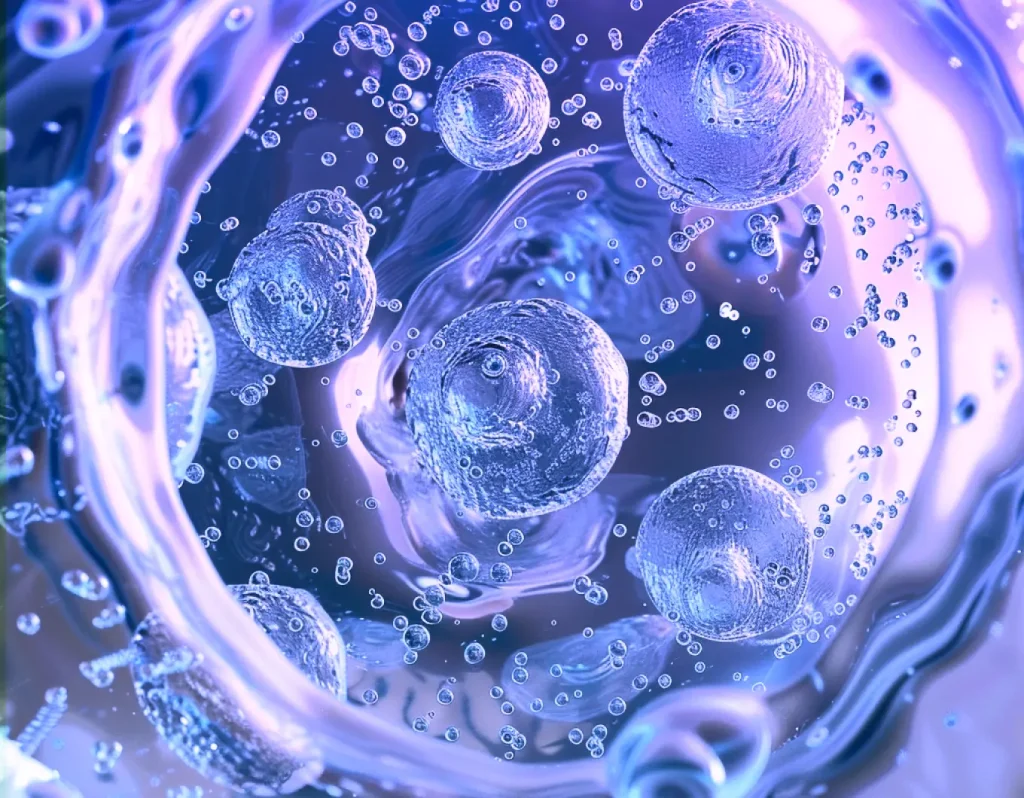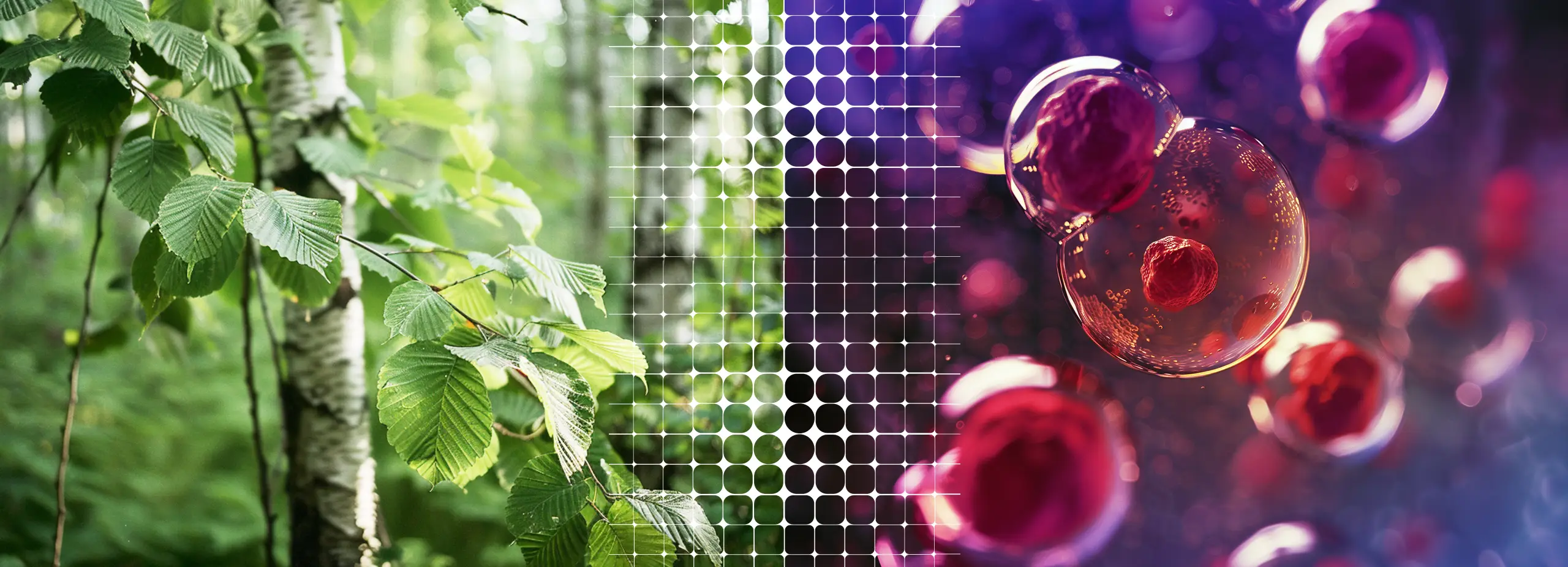3D CelluGel
Radical innovation at the intersection of nanotechnology and cellulose chemistry

The first Methacrylated Nanocellulose
After a decade of research the 3D CelluGel research team is announcing the successful development of a new form of nanocellulose bioink for 3D bioprinting.
This is an important milestone in the development of sustainable, responsible and high-performance materials for advanced biofabrications, 3D cell culture, biomedical applications and beyond.
Research
Culturing
Screening
Dressing
Engineering
Latest Publications
Photocross-Linkable and Shape-Memory Biomaterial Hydrogel Based on Methacrylated Cellulose Nanofibres.
Yury Brusentsev, Peiru Yang, Alistair W. T. King, Fang Cheng, Maria F. Cortes Ruiz, John E. Eriksson, Ilkka Kilpeläinen, Stefan Willför, Chunlin Xu, Lars Wågberg, and Xiaoju Wang
Biomacromolecules 2023 24 (8), 3835-3845
Bioprinting Macroporous Hydrogel with Aqueous Two-Phase Emulsion-Based Bioink: In Vitro Mineralization and Differentiation Empowered by Phosphorylated Cellulose Nanofibrils.
Qingbo Wang, Özge Karadas, Jessica M. Rosenholm, Chunlin Xu, Tuomas Näreoja, Xiaoju Wang,
Advanced Functional Materials. 2024, 2400431.
A new bioink for 3D biofabrication.
3D CelluGel is the first high-performance xeno-free cellulosic biomaterial ready for light-based 3D printing.
The bioink market is expect to multiply 6 times within the timeframe 2021 – 2032*.
*Bioinks market global industry analysis 2017-2021 and opportunity assessment 2021 – 2032. Persistence Market Research
Xeno FREE
Animal Free – without genetic contamination
Photo and Ionic Crosslinking
To create a stable structure that is easily mixed with other photopolymers
Unique porous structure
To build an optimal microenvironment for cell culturing
Stable even at low concentration
For optimal 3D Bioprinting performance and high fidelity
Optimal for cell culture,
made from wood.

Nanocellulose is a sustainable alternative and an excellent, well-performing material due to its biocompatibility. It forms highly detailed and mechanically robust structures, enhancing the precision and functionality of printed tissues.
- Natural, responsible, and sustainable solution
- Offers a perfect structure to promote cells growth
- Guarantees great biocompatibility
- Highly customisable and adaptable
Engineered for light-based 3D printing
- Dual effect of photo- and ionic cross linking for optimal structure
- Tailored concentration for 3D printing
- Hydrogels for high-fidelity printing
Highly customisable and easy to integrate
- Suited for various applications with broad chemical modifying capacity
- High mechanical stiffness
- Optimal shear-thinning rheological properties for 3D printing

Optimised structure for cell growth
- Fibrous network provides an ideal environment for cell growth, great proliferation and migration
- Available as microgels
Developed for scalability
- Proven batch-to-batch consistency for upscaling
- Composite integration with other biophotopolymers to expand applications’ spectrum
Made possible by a cross-disciplinary team of experts.
Chunlin Xu
Chunlin is the 3D CelluGel project leader managing the activities that support the evaluation of business potential of cellulose-based hydrogels. He has a strong technology background and experience in bioeconomy, both in academic and industrial settings.
He is a professor in Fiber and Biopolymer Chemistry at Åbo Akademi. The research focus of his research team is on biomass chemistry and biomass processing. The team´s ambition is the strong desire of untapping the value of forest, which is the sustainable resource.
Xiaoju Wang
Xiaoju is a biomaterial engineering scientist and leading the research group of Biomaterials and Drug Fabrication at Åbo Akademi. Her research group has a goal to provide novel biomaterials and drug delivery systems to biomedical and pharmaceutical fields with a particular focus engaging natural polymers, nanocomposites, using advanced fabrication tools such as 3D (bio)printing. In the 3D CelluGel Xiaoju is project co-lead supervising the product and 3D bioprinting application development. She is the main inventor of 3D CelluGel ink.
Xiaoju is currently Research Council of Finland funded academy research fellow.
Qingbo Wang
Qingbo is a doctoral candidate specializing in bioprinting solutions. His research focuses on developing sustainable wood-derived biomaterials for bioprinting technologies. In the 3D CelluGel project his focus has been in developing the bioink formulation and testing different bioprinting solutions. By integrating photo-crosslinkable and animal-free CNFMA into bioprinting processes, the team aims to promote sustainable practices in the biomedical field.
Shujun Liang
Shujun is a PhD researcher developing bio-interfacing solutions tailored for wood-derived materials. Her background in bioproducts provides a perspective on understanding the interactions between cells and CNFMA. In the 3D CelluGel project her research is primarily focused on advancing the creation of 3D culturing models for various cell lines within the CNFMA framework. The goal is to recreate microenvironments that support nutrient delivery and cell-cell interactions.
Oskar Backman
Oskar´s background is in in organic chemistry, but currently he has pivoted into a more technical field to follow his passion of 3D printing. Oskar did his master thesis on a project of 3D printing hydrogel in service of sustaining drug release funded by Bayer Turku. He has strong expertise in different 3D printing techniques and supports the team with his skills, especially in formulation development and evaluation of hydrogel inks.
Marjo Lehtinen
Marjo is the Commercial Champion in the 3D CelluGel project funded by Åbo Akademi University and Business Finland. In this role she is managing the preparation of commercial activities related to research outcome and working closely with the research team. Having worked both in large global companies and in SMEs she has a strong background in business development and international sales and marketing in the health technology segment.
3D CelluGel Methacrylated Nanocellulose has been optimised to satisfy the requirements of modern 3D bioprinting. The future is exciting and the technology is highly adaptable to different product applications.
Drug-eluting wound dressings and implants
3D printable housing matrix for synthetic biology processes
Sustainable high-performance surface treatment
Advanced dressings with preloaded active pharmaceutical ingredients, accelerating tissue regeneration and minimising infection risks
Advanced solid-state photosynthetic cell factories
Utilisation of methacrylated nanocellulose in combination with other materials to provide high-performance and sustainable coatings





